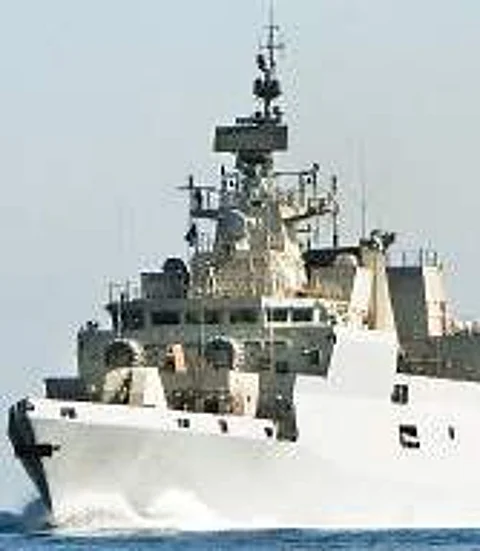

NEW DELHI: THE Indian navy may be on a warship commissioning spree, but it’s actually ‘toothless’. Earlier this week, the INS Kiltan-Anti-Submarine Warfare (ASW) stealth corvettes joined the eastern naval command but without any offensive capability like the Active Towed Array Sonar (ACTAS) system, which is essential to detect enemy submarines. The navy is yet to get six low-frequency ACTAS systems for which it’s awaiting Atlas Elektronik from a German firm since 2015. But due to the new blacklisting policy, things are moving in the right direction, a naval official said.
“ACTAS is still some distance away and we are hoping for Nagin, a similar system which is under development by the DRDO,” said an official. Launching the stealth corvettes was aimed at giving a fillip to India’s anti-submarine warfare capabilities, keeping in view China’s dominance in the Indian Ocean Region.According to naval sources, Indian ships currently use bow-mounted or hull-mounted sonar which is less effective. The towed-array sonar provides observation of the sea space at ranges considerably over 60 km, depending on the propagation conditions of the water. This gives the sonar an operational range that far exceeds that of radars and the weapons range of submarines, making it not only ideal for hunting submarines but also for wide-area reconnaissance of surface combatants.
Incidentally, INS Kamorta, another anti-submarine warfare corvette, which was inducted in the navy in August 2014, is still floating without its strike capability.It’s a similar story with the navy’s submarine fleet as well. Kalveri class (popularly known as Scorpene submarines) was commissioned without the key weapon of a submarine — torpedo. But, the navy desperately requires these torpedoes to be mounted on its already-delayed six Scorpene submarines under construction by state-owned Mazagon Dock Shipbuilders Ltd in collaboration with French firm DCNS.
A naval official claimed that without the heavyweight torpedoes, the submarines are almost “toothless”. The navy is waiting for the next Kalveri class submarine — INS Khanderi — to be inducted by November.
It happened because Black Shark torpedoes — multi-purpose weapons designed to be launched from submarines — are produced by a subsidiary of Finmeccanica called WASS (Whitehead Alenia Sistemi Subacquei). It was declared the winner in 2014 after competitive bidding. But the contract could not be signed as the government put a ban on signing the deals in the wake of a probe into the VVIP helicopter deal. Earlier this year, India had cancelled its contract to buy 98 Black Shark heavyweight torpedoes at an estimated cost of $200 million.
According to a navy official, the strength of the navy’s submarines has dwindled from a total of 21 submarines in the 1980s to 13 conventional submarines plus one indigenous Arihant-class nuclear submarine and one Russian Akula-class submarine operating on lease. China, in comparison, has a strength of 65 subs, which “is a matter concern”.
“What is the point of commissioning warships which are not ‘battle ready’, asked a senior defence official.